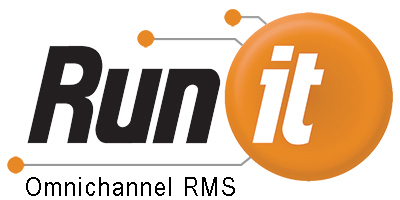Retailers no longer have to worry about failing to fulfill orders due to an incorrect inventory count. Fulfillment automation has many advantages that help omnichannel retailers ensure orders are completed on time. We’ll explore how fulfillment automation can optimize logistics and warehouse operations, reduce costs, grow sales, and scale for the busiest shopping seasons.
Optimize Logistics and Warehouse Operations
Logistics and warehouse operations are critical to order fulfillment. With manual processes, this can often be tedious and time-consuming. Using technologies like electronic tracking systems can facilitate fulfillment automation, resulting in fewer errors and more completed orders. Retailers can also easily track what items are in stock in specific store locations and the warehouse. This is especially helpful when a customer comes into a store looking for a specific item and it’s not in stock. A sales associate in the store can locate the item in another store location nearby and have it delivered to the customer or schedule a pickup.
In the past, retailers kept their warehouse and stores separate. This meant an order would have to go from warehouse to store and then finally to the truck for distribution, often taking several days. Today, retailers realize they can be more efficient using stores for inventory storage and distribution. Technologies like inventory management software enable retailers to accurately measure how much of a given item is available for purchase, and geo-routing helps distribute these orders quickly, building customer loyalty.
Geo-routing technology improves logistics of online or buy online, pick up in-store (BOPIS) orders as well. This technology automatically selects the nearest warehouse or store location for order fulfillment, ensuring that customers receive their purchases at the earliest possible time, and at the lowest possible shipping cost.
Reduce Costs
Geo-routing and other fulfillment automation techniques enable retailers to reduce shipping costs. New solutions allow retailers to find the lowest shipping rates from hundreds of carriers and print labels instantaneously, to have orders out the door as soon as possible. The simplicity of fulfillment automation gives in-store sales associates the power to assist in an area where they once couldn’t.
This, in turn, leads to higher customer satisfaction. 88% of shoppers believe free shipping is the top incentive when choosing a retailer for an online purchase.¹
Given the power of fulfillment automation, retailers can optimize inventory counts to save costs. Following the ABC model we covered in a previous blog, the best sellers will be more plentiful, and the higher-priced items that don’t sell as well should be limited to a smaller quantity. This helps retailers make the most use of their store space.
Additionally, automated fulfillment streamlines back-end processes saving as much as 55 percent on order processing activities and reduces labor overhead by as much as 60 percent.² Reduced expenses coupled with greater efficiency lead to higher ROI for organizations that leverage fulfillment automation technologies.
Although not every retailer can afford to offer free or reduced price shipping, investing in fulfillment automation and location-based shipping technologies can reduce costs for both the retailer and the customer, leading to more sales opportunities.
Grow Sales
Improved process efficiency is a crucial driver for sales growth. Online marketplace Amazon was able to grow its brand significantly with the introduction of Amazon Prime, a free two-day shipping service. While Amazon operates almost exclusively online, omnichannel retailers can benefit from fulfillment automation solutions to grow their businesses on every channel. In-store, sales associates will be able to spend more time focused on sales, and online, retailers will have more flexibility to deliver orders on time with fulfillment automation solutions.
According to the National Retail Federation, retail supply chain and operations executives believe automation could boost revenue growth by 10% each year. The technology is becoming more widespread and is expected to penetrate 80% of the industry within the next two years.³
Scale for the Busiest Shopping Seasons
As businesses grow, order fulfillment becomes a more significant challenge. However, with new technologies, organizations can scale to meet the demand for the busiest shopping seasons. This includes harnessing the power of inventory management, point-of-sale, and order fulfillment systems. Customers want their products on time, and during the holidays the high volume of orders can be especially problematic without the right solutions in place.
Runit offers a cloud-based integrated inventory management and point-of-sale (POS) system that enables retailers to manage orders across store locations from anywhere. Our system seamlessly integrates with SQQUID to manage online channels and automate order fulfillment, giving your retail business a comprehensive solution to drive customer satisfaction and grow your business. To learn more about using Runit and SQQUID together, contact a member of our team today.
¹https://marketingland.com/e-commerce-report-9-10-consumers-say-free-shipping-no-1-incentive-shop-online-180280
²http://www.gartner.com/imagesrv/media-products/pdf/esker/Esker1-31LQRSV.pdf
³https://www.supplychaindive.com/news/IBM-retail-supply-chain-automation/546077/






